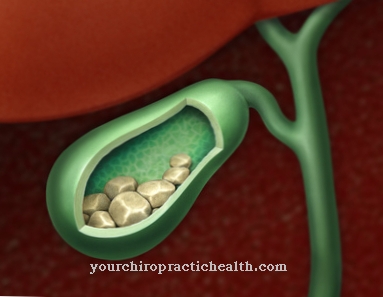The Electrical impedance tomography (EIT) is a new imaging method that is based on the different electrical conductivities of different areas of the body. Many possible areas of application are still in the experimental stage. Their use has proven itself in checking lung function.
What is electrical impedance tomography?

Electrical impedance tomography (EIT) has already established itself in lung function diagnostics as a new non-invasive imaging method for examining human tissue. For other applications, the EIT is about to make a breakthrough.
Using electrodes, alternating electrical currents of different frequencies and with low amplitudes are fed into the adjacent tissue. Depending on the nature or functional state of the tissue, different conductivities result. These are dependent on the respective impedance (alternating current resistance) of the corresponding body area. Several electrodes are positioned on the body surface to be measured.
While high-frequency alternating currents with a small amplitude flow between two electrodes, the electrical potential is measured at the other electrodes. The measurement is repeated continuously by varying the pair of stimulating electrodes as required. The measured potentials result in a sectional image, which allows conclusions to be drawn about the composition and condition of the tissue examined.
In electrical impedance tomography, a distinction is made between absolute and functional EIT. In the case of the absolute EIT, the nature of the tissue is examined, while the functional EIT measures different conductivities depending on the respective functional state of the body area to be measured.
Function, effect & goals
As already mentioned, electrical impedance tomography is based on the different conductivity of different areas of the body, biological tissue or organs. So there are well-conducting and badly-conducting areas of the body. In the human body, conductivity is determined by the number of free ions.
For example, a water-rich tissue with a high concentration of electrolytes can be expected to have better conductivity than a fatty tissue. In addition, when there are functional changes in the organs, chemical changes can also occur in the tissue, which affect the conductivity.The absolute EIT is imprecise because it depends on the individual anatomy and poorly conductive electrodes. This often leads to the formation of artifacts. The functional EIT can significantly reduce these errors by subtracting the representations.
The lungs in particular are suitable for examination using electrical impedance tomography, as their conductivity is much lower than that of most other organs. This results in an absolute contrast to the other body parts, which has a positive effect on the representation in an imaging process. The conductivity of the lungs also changes cyclically depending on whether you are inhaling or exhaling.
This is another reason to examine the lungs in particular using EIT. Their different conductivity during breathing suggests good results when examining lung function. The advances in digital technology make it possible for the intensive care doctor to have the data obtained from the conductivity measurement of the lungs processed in such a way that the lung function can be visualized directly at the patient's bedside. Lung function monitors, which are already used in intensive care medicine, have recently been developed on the basis of electrical impedance tomography.
Studies are underway to open up other uses for the EIT. In the future, this technology can play a role as additional diagnostics for mammography. It has been found that normal and malignant breast tissue have different conductivities at different frequencies. The same applies to the additional diagnostics for gynecological cancer screening. Studies on the possible use of EIT in epilepsy and stroke are also currently being conducted.
A future application for intensive medical monitoring of brain activity in severe brain pathologies is also conceivable. The good electrical conductivity of the blood also implies a possible application for the visual representation of the organ blood flow. Last but not least, electrical impedance tomography can also be used in sports medicine to determine oxygen uptake (Vo2) or arterial blood pressure during exercise.
Risks, side effects & dangers
Compared to other tomography methods, electrical impedance tomography has the advantage that it is completely harmless to the organism. No ionizing radiation is used, as is the case with computed tomography. In addition, heating effects due to higher-frequency alternating currents (10 to 100 kilohertz) with low amperage can be avoided.
Since the equipment is also much cheaper and smaller than the classic tomography method, the EIT can be used with patients over a longer period of time and provide continuous real-time visualizations. At the moment, however, the main disadvantage is the lower spatial resolution compared to other tomography methods. There are, however, ideas to improve the resolution of the images by increasing the number of electrodes. The quality of the pictures is still flawed.
Quality improvement, however, occurs step by step through the increasing use of active surface electrodes. Another disadvantage is that the current does not remain in the body section to be examined, but rather is distributed in three-dimensional space following the lowest resistance. Therefore, the creation of images is also much more complicated than with classic computed tomography. Several two-dimensional representations in three-dimensional space are necessary in order to finally generate a three-dimensional image, which is then presented in two-dimensional again.
This gives rise to the so-called "inverse problem". The inverse problem says that the cause must be deduced from the present result. Usually these problems are very difficult or impossible to solve. The cause can only be clarified in combination with other procedures. Sufficient experience for evaluating the representations of the EIT must first be gathered through further studies.












.jpg)



.jpg)










.jpg)
